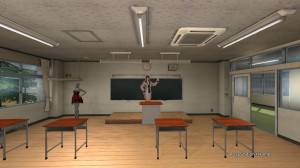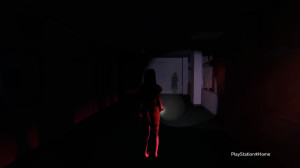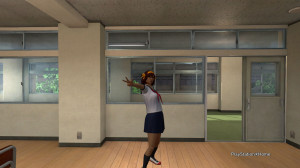Nostalgic School Days: A Look Back
by RadiumEyes, HSM team writer
Once upon a time, Irem held a prominent place in Home – one could relax on the beach at the Seaside of Memories (the first space to sport swimming), or go spelunking in the (appropriately-named) Gathering Place for Spelunkers, as well as visit the yagura. The distinctly Japanese space that was Irem Square offered numerous freebies from the vendors found throughout, and the yagura dominating the space stood as a reminder of festivals celebrated in Japan – particularly the Bon Festival. These areas offered a nice, tranquil setting to converse, something always appreciated.
However, they did not stay for long: by 2011, Irem was defunct and withdrew significantly from Home, with most of its Home-produced content removed as a result. Out of the ashes of this void emerged Granzella – formed by Kazuma Kujo (a former Irem employee) in May 2011, the company made a splash in Home with its own spaces, both public and personal. With the release of content such as the Glittering Sands Beach and Great Edo of Nippon, Granzella quickly established itself as a major Home developer, effectively filling the void that Irem left behind.
 It stands as a testament to the company’s commitment to quality to see their products get such great reception; their personal spaces, specifically, stand out as some of the best offered in Home. I began purchasing spaces rather late, but I naturally gravitated to Granzella’s virtual catalog; as an anime fan and a Japanese culture buff, I found myself drawn to the personal spaces that Granzella produced.
It stands as a testament to the company’s commitment to quality to see their products get such great reception; their personal spaces, specifically, stand out as some of the best offered in Home. I began purchasing spaces rather late, but I naturally gravitated to Granzella’s virtual catalog; as an anime fan and a Japanese culture buff, I found myself drawn to the personal spaces that Granzella produced.
One of them, Nostalgic School Days, appealed to me – this is a classic representation of a high school setting, with various rooms lining a hallway. One may anticipate seeing Haruhi Suzumiya (The Melancholy of Haruhi Suzumiya) or the cast of Azumanga Daioh walk pat, as the space evokes one of the most popular settings for anime. People often clamor for new content, but there’s something to be said about older material that remains popular, and Granzella definitely has its memorable stuff. Thus, I return to Nostalgic School Days for another look, to see how it holds up today.
The space itself debuted on the 17th of July 2013, so this space hasn’t reached its first anniversary yet; still, given how much had been released into Home since then, Nostalgic School Days may get lost in the confusion of market inundation. Here, one sees a single hallway with two large classrooms adjacent to it; a store stands nearby, allowing users to purchase space-specific items such as a science room table and the ubiquitous anatomy model. It feels somewhat small compared to Granzella’s other outings (especially the City by the Bay Loft), but part of the charm lies in how the space comes together as a whole – the rooms offer a bit of closeness, reflecting the friendships students could attain within them.
Japanese high school students are assigned a homeroom, where they spent the majority of their time; teachers move from class to class in order to teach, allowing the students time to converse and make friends. This atmosphere may not be overtly seen in Nostalgic School Days, especially from a Western perspective; either case, the space does reconstruct an important social setting: that of the high school. To return to anime, productions like Azumanga Daioh show students interacting both in and away from their homerooms; their assigned rooms become a center of socialization, as they meet there every school day, and the Azumanga Daioh characters quickly became friends through shared experiences.
 One may not be able to transform this space into a major social gathering (given the space restrictions and the fact that you can only invite so many people), but one can turn it into a meeting place for a group of close friends; machinimists may enjoy it, as it offers the chance to film anime-esque scenes here. The different time settings make the space all the more amusing and delightful – aside from the usual settings of morning, afternoon and evening, Nostalgic School Days offers the unique option of midnight. When you select it, the hallway gets bathed in shadow and ominous red light; this is the time when ghosts appear.
One may not be able to transform this space into a major social gathering (given the space restrictions and the fact that you can only invite so many people), but one can turn it into a meeting place for a group of close friends; machinimists may enjoy it, as it offers the chance to film anime-esque scenes here. The different time settings make the space all the more amusing and delightful – aside from the usual settings of morning, afternoon and evening, Nostalgic School Days offers the unique option of midnight. When you select it, the hallway gets bathed in shadow and ominous red light; this is the time when ghosts appear.
As a note, this references the idea of “twilight,” that nebulous period of the day wherein light and darkness mingle to create an image of curiosity and ambiguity; it symbolizes the subtleties of the world, a place where both humans and “monsters” reside. Japanese history includes numerous examples of this world – tengu, spirits and oni occupy the same space as humans, and they all can interact on some level. Nostalgic School Days incorporates an image of the unusual into its framework; midnight exists as the purview of spirits, where more negative emotions come out to play. The distorted red lights and the soul of the crying girl (who disappears when you approach her) make this a scary place to visit when darkness surrounds; it’s a great image, one that reinforces the closeness between two distinct spheres (the human and the spirit).
If one wishes to examine Japanese culture, Granzella offers a wonderful starting point here – much like Great Edo, users can see a specific image of Japanese society influenced by centuries of development. Take a while to explore your surroundings, and see how the school hallway looks; Granzella’s school hallway does a great job of presenting a portion of Japan’s daily life, with a living, breathing digital world where both people and souls intertwine.
Share
| Tweet |



 Twitter
Twitter